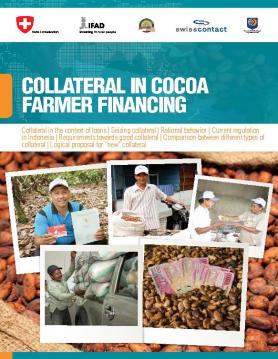You are here
Collateral in Cocoa Farmer Financing
To mitigate risk while lending, financial institutions often request hard collateral. Some light will be shed on the background and implications of collateral, especially in regard to the formal financial sector and the cocoa sector in Indonesia.
Financing farmers seems to be a challenging endeavor, since agricultural lending comes with its own risk characteristics. Broader risks can be weather events, changing weather patterns, pests and diseases, time gaps between income and living expenditure, transport risks to get the produce to the markets, etc. More particular risks for banks can be linked to the clients or to the banks behavior or knowledge. Lack of records at both farm and household level, lack of knowledge regarding formal financial services and often lack of collateral are external factors. Whereas lack of knowledge and understanding of a particular agricultural sector and the farmer’s financial situation are gaps a bank can address internally. In addition to that, there might be better business opportunities for banks, so agriculture loans don’t rank very high on their agenda. Although social considerations might play a role when financing farmers, the most important result for a bank is to get its disbursed money back, if possible with interest or profit share, thus a commercially attractive product.
Loans in arrears lead to the need of building higher loan loss provisions and later to write offs. The act of building the loan loss provision
decreases the profits or increases the losses, while the write off itself is cost neutral if sufficient loan loss provision was built. In reality
financial institutions avoid that sometimes by overstating the value of hard collateral or rescheduling loans.
Copyright © 2020 Grow Asia Terms of UsePrivacy PolicyContact Us

